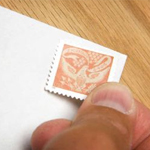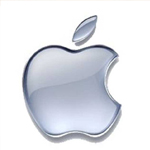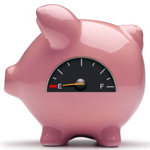 Client Spotlight: Investor’s Edge.
Client Spotlight: Investor’s Edge.
In October 2013 Jarrad Mahon of Investor’s Edge started their newsletter with the goal of increasing client retention and also driving more referrals into their already thriving property management business.
When we sat down with Jarrad to review the first 6 month’s of Investor’s Edge’s newsletter, he’d already noticed a strong increase in client engagement – clients referencing newsletter content in conversations with both him and his staff.
Jarrad’s tracking systems indicated that {some} of his new client activity was already driven by referral – it was already his preferred source of new customers. The question was how could he get more referrals?
At the 6 month anniversary of the Investor’s Edge newsletter it was time to launch their referral program.
As an aside, your clients have an emotional bank account – looking after them, staying in touch with them etc. are all deposits into your clients emotional bank account. For your clients to continue purchasing your product or service and be willing to make referrals you need a sufficient balance in their emotional bank account for you to make a withdrawal. (That’s why you don’t launch a referral program as soon as you launch a newsletter.)
After implementing his referral program, Investor’s Edge’s referral rate kicked up a gear. The referral rate increased 350% and it has stayed constant since.
Based on lifetime values and their close rate – Investor’s Edge will be adding over $162,000 in first year income from referrals each year they sustain this referral rate.
A year’s worth of referral customers are worth over $810,000 in BASE income over their typical 5 year lifetime (not including additional sales and the referrals they will produce nor the fact they will in all likelihood stay for longer.)
Needless to say continuing to use his newsletter to sustain his referral rates is high on Jarrad’s agenda.
 Easter is just around the corner and the shops are packed full with chocolate. I’m not a huge fan of Easter egg chocolate, but there is one thing at Easter that tempts me, and that is Cadbury Crème Eggs. I have no idea what’s inside exactly, but they are delicious and addictive.
Easter is just around the corner and the shops are packed full with chocolate. I’m not a huge fan of Easter egg chocolate, but there is one thing at Easter that tempts me, and that is Cadbury Crème Eggs. I have no idea what’s inside exactly, but they are delicious and addictive. w there are a lot of people bemoaning the increase in postage.
w there are a lot of people bemoaning the increase in postage. “He who controls others may be powerful, but he who has mastered himself is mightier still.”
“He who controls others may be powerful, but he who has mastered himself is mightier still.” The challenge of unrealised potential has always resonated with me.
The challenge of unrealised potential has always resonated with me. The late Steven Jobs was an emotional mixed bag for me. I hate Apple products with a Passion, yet I admire Steve Jobs for making inferior products so cool that people are willing to play a premium for them.
The late Steven Jobs was an emotional mixed bag for me. I hate Apple products with a Passion, yet I admire Steve Jobs for making inferior products so cool that people are willing to play a premium for them. I don’t know where I first heard the idea of the emotional bank account but it seems like an accurate concept.
I don’t know where I first heard the idea of the emotional bank account but it seems like an accurate concept.